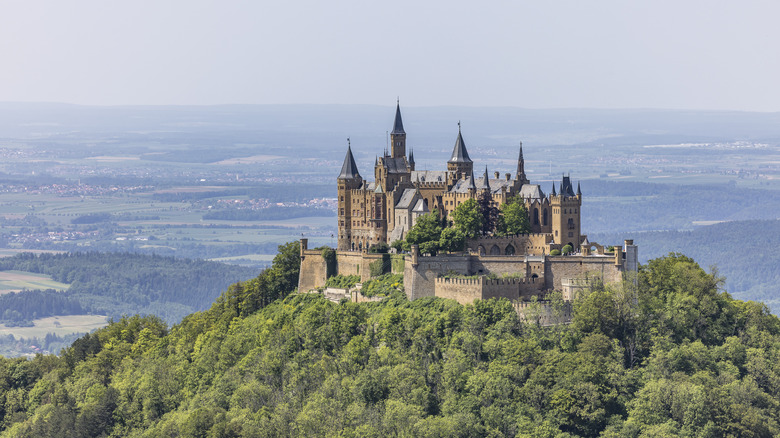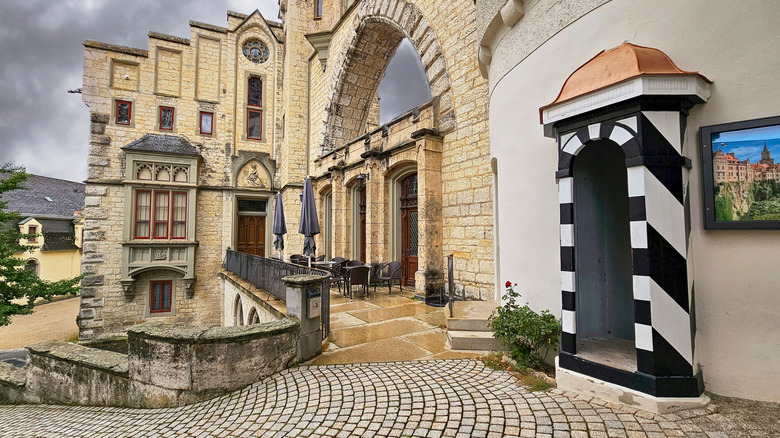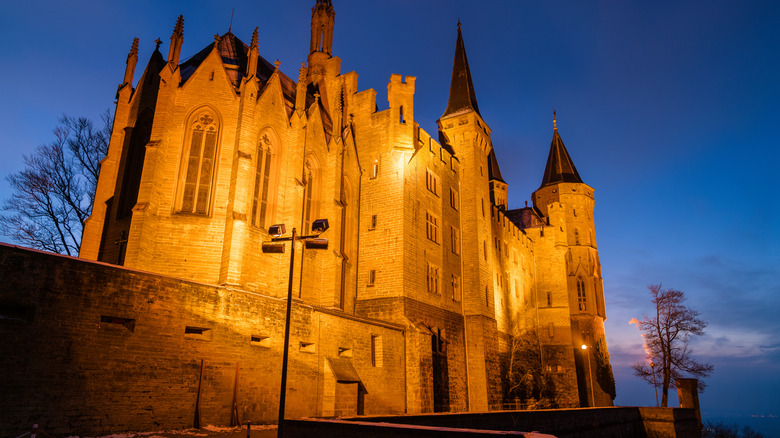This Beautiful European Storybook Castle Feels Like Being Transported Into A Fairy Tale
You could film a live-action "Cinderella" movie in Hohenzollern Castle, and wouldn't have to change a thing. The turrets look just right. The spires rise into points, and the crenelated walls are exactly what you expect of a fairy tale fortress. Naturally, it stands at the summit of a mountain, also called Hohenzollern, draped in dense forest. From these battlements, you can see miles of countryside spread out below. Set Hohenzollern next to the castle in the middle of Disney's Magic Kingdom, and they clearly share the same aesthetic. Yet this stylish citadel stands in Baden-Württemberg, a largely rural state in southwestern Germany.
Central Europe has no shortage of spectacular chateaux, such as these three popular castles in Dornburg, with breathtaking views of the Saale River. Some estimate that 25,000 castles stand in Germany alone, from many eras and in various physical states; some are vague outlines in the ground, others are actively occupied by their current owners.
Yet Hohenzollern holds a special place in the pantheon: more than 300,000 people visit the site each year, making it one of the most popular German castles. Visitors can tour the grounds, admire the architecture, and take in majestic views. You can't stay there, though; unlike so many European castles, which have been converted into hotels and wedding venues, Hohenzollern is still privately owned, by the family that originally built it.
The legendary past of Hohonzollern Castle
The castle has a peculiar history, defying expectations at every turn. Once the setting of a 13th century fortress, the land has long been owned by the Hohenzollerns, a powerful noble family. The Hohenzollern dynasty got around; they originated in Swabia, in the southern reaches of modern Germany, then became prominent in Prussia (in the northeast).
When Crown Prince Friedrich Wilhelm of Prussia — then patriarch of the Hohenzollern family — visited the ruins of the stronghold in 1819, he decided to build an elegant new palace, as a kind of family headquarters and homage to his ancestors. The anachronistic design didn't look like that older castle, but it did absorb St. Michael's Chapel, which had stood intact on the mountain since the 1400s. Wilhelm was eventually crowned King Wilhelm IV, but he died in 1861, some years before the castle was completed.
This was an eccentric time to build a castle, and Hohenzollern may remind many visitors of Neuschwanstein, one of Europe's most mesmerizing cliffside castles that inspired Disney's "Sleeping Beauty." Construction of Neuschwanstein also commenced in the late-1860s, long after the actual Middle Ages had drawn to a close. However, the man behind Neuschwanstein, King Ludwig II of Bavaria, met a tragic end: he plunged his family into debt, was dethroned, and died of drowning at a young age. In contrast, the Hohenzollerns still have dominion over their castle, under the auspices of descendant Georg Friedrich, Prince of Prussia.
Getting to Hohenzollern (and what to do there)
The closest major airport to Hohenzollern Castle is Stuttgart International, in Baden-Württemberg's capital, only about 50 minutes away by car. This airport only services flights to Europe, North Africa, and the Middle East, so travelers from the Western Hemisphere should expect a transfer or two. You can theoretically get from Stuttgart to the nearby town of Hechingen via public transit, but the possible routes are a bit slow and complicated — especially by German standards — and you should plan to budget at least two hours. Many visitors may opt for an organized tour, or weave a visit to Hohenzollern into a road trip through Germany's famous Black Forest, Baden-Württemberg's most famous destination.
While walking around the castle is the main draw, Hohenzollern also has a lavish — yet affordable — restaurant, as well as its own beer garden. The gift shop sells a wide range of aristocratic knickknacks, including bottles of authentic Prussian whisky. You'll find a handful of quality hotels in Hechingen, all of which cost between $100 and $200 per night, and are within a 10-minute drive of the castle.
The rolling hills of this region are well known for their hiking trails, and Stuttgart has a decent art scene and is home to both the Porsche Museum and Mercedes-Benz Museum. If you're looking for something truly unusual in the area, this unique, luxurious eatery is a feast for your senses.


